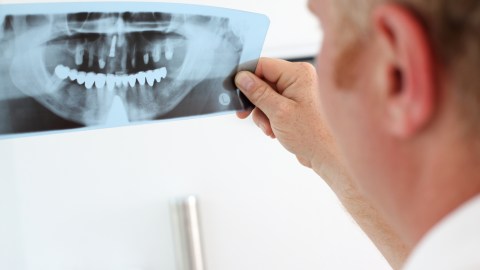Oral Hygiene and Cancer

The link between periodontal disease and heart disease is so well documented at this point as to not need further discussion, but evidence is also accumulating, and has been for some time, of a link between cancers (of various kinds) and poor oral hygiene.
Truly strong evidence for a link between cancer and poor oral hygiene is hard to establish, of course, because of the high number of potential confounders that could render such a link spurious. For example, the number of teeth a person has is not only an indicator of lifetime oral health but socioeconomic status as well. Poor people don’t spend as much time at the dentist’s office as wealthier people. We know that poverty and obesity are highly correlated and that obesity carries a cancer risk. Poor people also smoke more than rich people, giving rise to more heart disease and cancer. Teasing apart all the factors that could account for any supposed link between poor oral health and cancer is difficult, at best.
Nevertheless, it is possible, with careful experimental design, to tease apart some of these factors, and scientists have gotten much better at this in recent years. Which makes the following studies (suggesting a connection between poor oral health and cancer) all the more attention-getting. How ironic would it be if a bottle of Scope and a toothbrush turned out to be the key to preventing pancreatic cancer?
In “Periodontal Disease, Tooth Loss and Cancer Risk in a Prospective Study of Male Health Professionals” (Lancet Oncol. June 2008), a prospective study of cancer in male health professionals (people who probably go to the dentist), Dominique Michaud and colleagues tracked 48,375 men over a period of 18 years. The study found:
After adjusting for known risk factors, including detailed smoking history and dietary factors, periodontal disease history was associated with an increased risk of total cancer (HR = 1.14, 95% CI = 1.07–1.22, compared with no history of periodontal disease); by cancer site, statistically significant associations were observed for lung (HR = 1.36, 95% CI = 1.15–1.60), kidney (HR = 1.49, 95% CI = 1.12–1.97), pancreatic (HR = 1.54, 95% CI = 1.16–2.04; results previously published), and hematopoietic cancers (HR = 1.30, 95% CI = 1.11–1.53). Fewer teeth at baseline (0–16) was associated with a non-significant increase in risk of total cancer (HR = 1.09, 95% CI = 0.99–1.20, compared to 25–32 teeth); a statistically significant association was observed for lung cancer (HR = 1.70, 95% CI = 1.37–2.11, for 0–16 vs. 25–32 teeth).
Michaud and her colleagues focused on pancreatic cancer, specifically, in a separately published study in the Journal of the National Cancer Institute in January 2007. The team found that a “history of periodontal disease was associated with increased pancreatic cancer risk,” with a risk ratio for smokers of 1.64 and for never-smokers 2.09 (meaning that if you’ve never smoked, your odds of being diagnosed with pancreatic cancer more than double if you have periodontal disease).
In “An Exploration of the Periodontitis-Cancer Association” (Ann Epidemiol. May 2003), Huipel et al. examined data for 11,328 adults enrolled in NHANES and found:
Compared with individuals with a healthy periodontum, fatal cancer occurrence was positively associated with periodontitis at baseline (age and gender adjusted odds ratio = 1.55, 95% confidence interval: 1.25-1.92). Of the different cancer types, lung cancer demonstrated the strongest association. After adjustment for known risk factors for lung cancer, the magnitude of the association between periodontitis and lung cancer ranged between 1.48 (95% confidence interval: 0.88-2.50) and 1.73 (95% confidence interval: 1.01-2.97).
In “Tooth loss is associated with increased risk of total death and death from upper gastrointestinal cancer, heart disease, and stroke in a Chinese population-based cohort” (Int J Epidemiol. April 2005), Abnet et al. conducted a cohort study that included 29,584 healthy Chinese adults who were participants in a chemoprevention trial from 1986 through 1991 and who were followed up through 2001. The principal finding:
Individuals with greater than the age-specific median number of teeth lost had statistically significant 13% increased risk of total death [95% confidence interval (CI) 9–18%], 35% increased risk of upper GI cancer death (95% CI 14–59%), 28% increased risk of heart disease death (95% CI 17–40%), and 12% increased risk of stroke death (95% CI 2–23%), but no significantly increased risk of death from cancer at other sites. These elevated risks were present in male smokers, male non-smokers, and females, nearly all never-smokers.
This is just a small sampling of the literature. (You can find plenty more to read at Google Scholar.) As with the many reports connecting periodontal disease with cardiovascular disease (CVD), a debate rages on about whether correlation means causation, in the case of periodontal disease and cancer. I don’t think it’s rocket science. For me, the picture that emerges is one in which chronic inflammation caused by poor oral health sets the stage for more serious illness. (See my earlier post for more info about the connection between inflammation and cancer.) I think further research will probably turn up some surprising connections between oral bacteria and cancer, but we don’t have to wait for additional research to begin taking oral hygiene seriously as a potential way to head off cancer and CVD. There’s no downside to treating your mouth right. The upside may well be years of extra life. That’s what the handwriting on the wall is saying at this point.
If you found this article helpful, please share it. Thank you!




